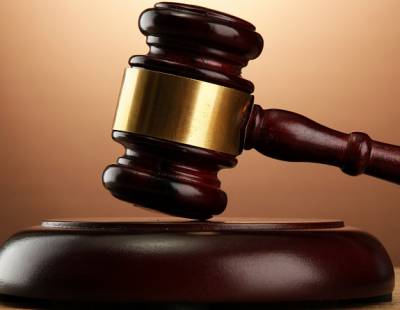No coercive action against NBA for not complying with CTN Amendment Rules: Kerala HC
The News Broadcasters Association (NBA) has filed a Writ Petition in the High Court of Kerala challenging the Cable Television Networks (Regulation) Act, 1995, [Cable TV Act], the Cable Television Networks Rules, 1994 [Cable TV Rules] and the Cable Television Networks (Amendment) Rules, 2021 [Amendment Rules, 2021] on the grounds that the Cable TV Act, Cable TV Rules and the Amendment Rules, 2021 are violative of the fundamental rights guaranteed under Part III of the Constitution of India, including Article 14, Article 19(1)(a) and 19(1)(g).
GAMEXX Awards 2021 Early Bird Discount Extended Last Date - Wednesday, June 30, 2021 - ENTER NOW
The main challenge is to Rules 18 to 20 of the Amendment Rules, 2021 as the Rules create an Oversight Mechanism giving the Executive unfettered, unbridled and excessive powers to regulate the content of the television channels of the news broadcasters. The Complaint redressal structure created, and the powers delegated have a “chilling effect” on the content of the media.
Amongst other challenges, the News Broadcasters have challenged the offending parts of Rules 6 [Programme Code] and 7 [Advertising Code] of the Cable TV Rules in that they are beyond the provisions of Article 19(2) of the Constitution. The said Rules contains vague, imprecise and ambiguous terms in relation to ‘content’ such as “good taste”, “half-truths”, “snobbish attitude”, “indecent”, “vulgar”, “suggestive” and “repulsive”, etc., and are, therefore, not in consonance with the judgment of the Supreme Court in Shreya Singhal vs Union of India (2015) 5 SCC 1, where the Supreme Court has stated that Section 66A creates an offence which is vague and overbroad, and therefore, unconstitutional under Article 19(1)(a) and is not saved by Article 19(2).
In the hearing held before the Kerala High Court on July 16, 2021, Maninder Singh, Senior Advocate, who appeared for the Petitioners, submitted that the Amendment Rules, 2021 are violative of Article 19(1)(a). He also submitted that the said Rules give the Additional Secretary (Oversight Mechanism) the power to adjudicate upon the Orders passed by a retired Supreme Court/ High Court Judge, which allows the Executive to make inroads into the judicial process. He further submitted that the Complaint redressal structure under the Amendment Rules, 2021 was in pari materia with the Grievance Redressal Mechanism in the Information Technology (Intermediary Guidelines and Digital Media Ethics Code) Rules, 2021.
He also pointed out that an Interim Order had been passed by the Kerala Court in similar matter WP 13675 of 2021 being News Broadcasters Association & Others vs UOI & Another in which the Court has stated that “there will be an Interim Order directing the respondents to refrain from taking any coercive action against the petitioners for non-compliance of the provisions contained in Part III of the Ext. P-1 Rules pending the disposal of the writ petition”.
In view of the submissions made above, the Hon'ble Judge passed a similar Order in favour of NBA and its members stating that “in the light of the interim order passed by this Court in WP (C.) No. 13675 of 2021, there will be an interim order directing the respondents to refrain from taking coercive action against the Petitioners for not complying with the Cable Television Networks (Amendment) Rules, 2021[Ext. P3) pending disposal of the writ petition”.
In June this year, the Central Government had issued a notification amending the Cable Television Network Rules, 1994, thereby providing a statutory mechanism for redressal of grievances/ complaints of citizens relating to content broadcast by television channels in accordance with the provisions of the Cable Television Network Act, 1995.
At present, there is an institutional mechanism by way of an Inter-Ministerial Committee to address grievances of citizens relating to violation of the Programme/ Advertising Codes under the Rules. Similarly, various broadcasters have also developed their internal self-regulatory mechanism for addressing grievances. However, a need was felt to lay down a statutory mechanism for strengthening the grievance redressal structure. Some broadcasters had also requested for giving legal recognition to their associations/ bodies. The Supreme Court in its order in WP(C) No.387 of 2000 in the matter of “Common Cause Vs Union of India & Others” while expressing satisfaction over the existing mechanism of grievance redressal set up by the Central Government, had advised to frame appropriate rules to formalise the complaint redressal mechanism.
In the aforementioned background, the Cable Television Network Rules have been amended to provide for this statutory mechanism, which would be transparent and benefit the citizens. At the same time, self-regulating bodies of broadcasters would be registered with the Central Government.
At present, there are over 900 television channels which have been granted permission by the Ministry of Information and Broadcasting and all of which are required to comply with the Programme and Advertising Code laid down under the Cable Television Network Rules. The above notification is significant as it paves the way for a strong institutional system for redressing grievances while placing accountability and responsibility on the broadcasters and their self-regulating bodies.




Share
Facebook
YouTube
Tweet
Twitter
LinkedIn